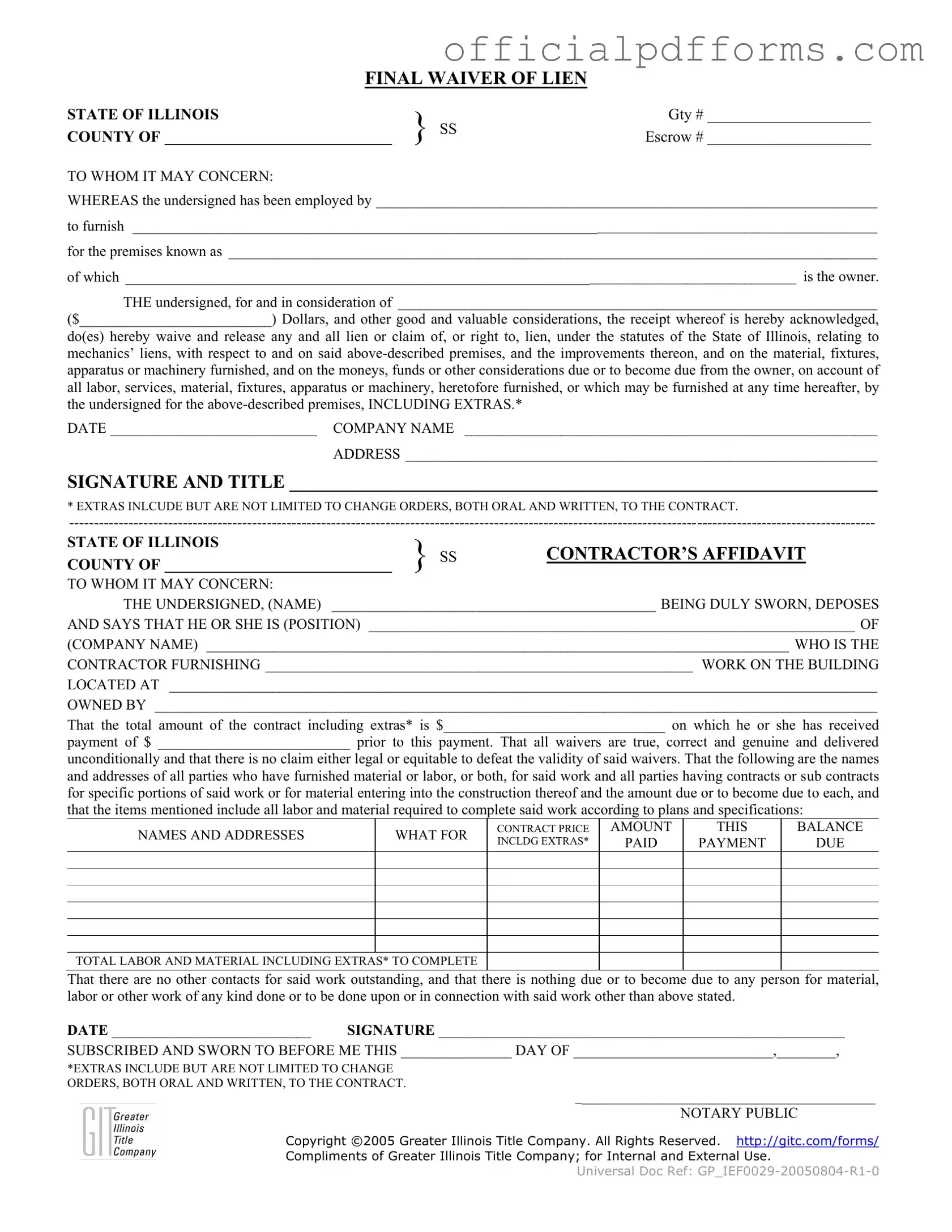Fill in a Valid Illinois Final Waiver Of Lien Form
The Illinois Final Waiver of Lien form is a legal document that serves to release any claims or liens against a property once payment has been received for work completed. This form is essential for contractors and subcontractors, ensuring that they acknowledge receipt of payment and relinquish any rights to file a lien on the property. To streamline your process, consider filling out the form by clicking the button below.
Access Form Online
